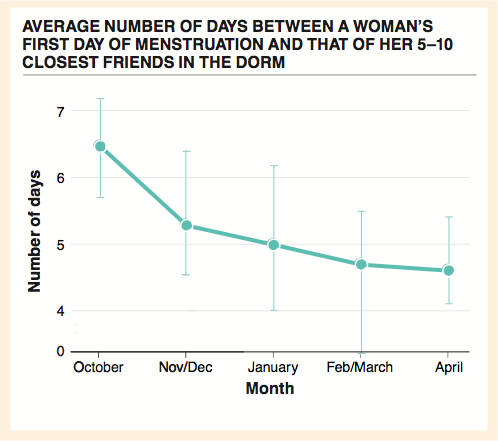
Chapter 25. Chapter 25 Graphic Content
Introduction

Instructions
Review the information provided in the graph to answer each question below.
After submitting your answer, you will be provided feedback to check if your response is correct.
(This activity contains 7 questions.)
1.

1. In October, what was the average number of days between a woman’s first day of menstruation and that of her 5–10 closest friends in the dorm? What was this number in April? By what percentage had it changed in six months?
2.

2. If you assume that all women in the study had 28-day menstrual cycles, what is the highest value that would have been possible for the y-axis? Why?
3.

3. Women on the pill were not excluded from this study. How might they influence the results? Why do you think they were included?
4.

4. The data and the idea being tested were developed by a college undergraduate. Should that influence your interpretation of them? Why or why not?
5.

5. What does the break in the y-axis (near the bottom) indicate? How would the graph appear different if this break were not made?
6.

6. What do the vertical lines through each data point indicate? How would your evaluation of this graph change if the vertical lines through the data points were twice as long?
7.

7. What is the “take-home message” of this graph? What additional data would be helpful? Why?
Activity results are being submitted...